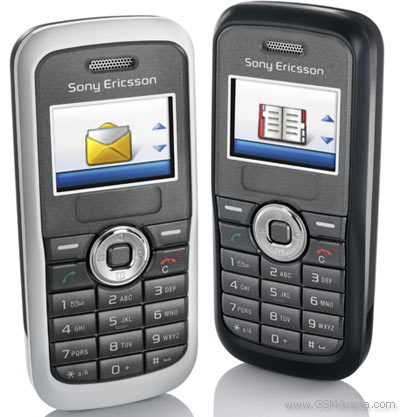Sony Ericsson J100 Full Specs Pricing Pros & Cons

Introduction to Sony Ericsson J100
The Sony Ericsson J100 is a feature phone released in February 2006. It was designed to cater to users seeking simplicity and basic functionality in mobile communication. The device is recognized for its minimalistic design, lightweight build, and budget-friendly pricing. This article explores the various aspects and specifications of the Sony Ericsson J100, offering insights into its design, functionality, and the context of its release.
Design and Build
The Sony Ericsson J100 measures 100 x 44 x 18 mm and weighs just 79 g, making it exceptionally light and compact. It's designed to fit comfortably in the hand and pocket, emphasizing portability. The phone was available in two color variants: Polar White and Twilight Blue, appealing to different aesthetic preferences. It features a classic candy-bar design typical of early feature phones, with a physical keypad for text input and navigation.
Display
The device is equipped with a 1.4-inch STN display, capable of rendering 65K colors. Despite its small size and basic resolution of 96 x 64 pixels, the display serves the fundamental purpose of displaying text messages and contacts. With an 82 pixels per inch density, the screen is functional for simple tasks but lacks the sharpness for detailed images or graphics.
Network and Connectivity
The Sony Ericsson J100 operates on GSM technology, covering the GSM 900/1800 frequency bands. This ensures basic mobile communication capabilities, though it lacks advanced data connectivity features like GPRS or EDGE. The phone does not support WLAN, Bluetooth, or any form of wireless connectivity beyond standard cellular networks, reinforcing its purpose as a basic communication tool.
Memory and Storage
The phone does not come with a card slot for expandable storage, and its memory options are minimal. It relies on SIM-based phonebook storage, which limits the number of contacts to what the SIM card can accommodate. The call record feature allows logging of up to 10 dialed, 20 received, and missed calls, which was sufficient for basic use during its time.
Audio and Sound
In terms of audio, the J100 does not have a loudspeaker or a 3.5mm audio jack, aligning with its minimalist design. Users can personalize call alerts using vibration and polyphonic ringtones, with support for 32-tone polyphonic sounds. Despite the lack of advanced audio features, these basic options were adequate for the target user group.
Battery Life
The device is powered by a removable Li-Ion battery, offering up to 300 hours of stand-by time and up to 8 hours of talk time. This battery performance was considered excellent for a feature phone, allowing users extended periods of usage between charges. The removable battery design also provided the flexibility of easy replacement or carrying a spare.
Features and Software
Running as a feature phone, the Sony Ericsson J100 focuses on core functionalities without the complexities of modern smartphones. It lacks a camera, browser, and does not support Java. However, it includes basic features like SMS messaging and simple games. The absence of a browser or email functionality reinforces its role as a communication-centric device rather than a smart device.
Market Position and Pricing
At launch, the Sony Ericsson J100 was priced around 40 EUR, positioning it as an affordable option for consumers who needed a reliable mobile phone for calls and texts. It was discontinued sometime after its release, but during its availability, it served a niche market seeking simplicity over complexity. Its pricing made it accessible to individuals and families looking for an economical communication device.
Conclusion
The Sony Ericsson J100 encapsulates the essence of early feature phones, delivering basic communication services in a compact and budget-friendly package. While it lacks many features of modern devices, it succeeded in providing essential phone functionality to its users. Its design simplicity, coupled with reliable battery life, made it a practical choice for those who prioritize straightforward communication over technological frills.
Main Features of Sony Ericsson J100
- Lightweight design at only 79 grams
- Compact dimensions (100 x 44 x 18 mm)
- Color display with 65K colors
- Supports Mini-SIM
- Polyphonic ringtones with vibration alert
- Simple SMS messaging capability
- Includes built-in games
- Long standby time up to 300 hours
- Extended talk time up to 8 hours
- Available in two colors: Polar White and Twilight Blue
- Affordable price, around 40 EUR
Disadvantages of Sony Ericsson J100
- GPRS and EDGE are not supported, limiting internet connectivity.
- The phone lacks a built-in camera.
- No loudspeaker available, reducing sound output options.
- No 3.5mm headphone jack, limiting compatibility with external audio devices.
- Absence of Bluetooth and WLAN results in restricted wireless connectivity.
- No support for GPS positioning features.
- FM Radio is not available.
- USB connectivity options are not specified.
- Limited display size of 1.4 inches often results in a poor user experience.
- Low screen resolution of 96 x 64 pixels impacts display clarity.
- No memory card slot for additional storage expansion.
- Phonebook limited to SIM-based entries only.
- Lacks Java support, limiting compatibility with many applications and features.
- No web browser functionality, restricting access to online content.


View Also
More Phones
All Rights Reserved +13924 Phones © Mobilawy 2025

























